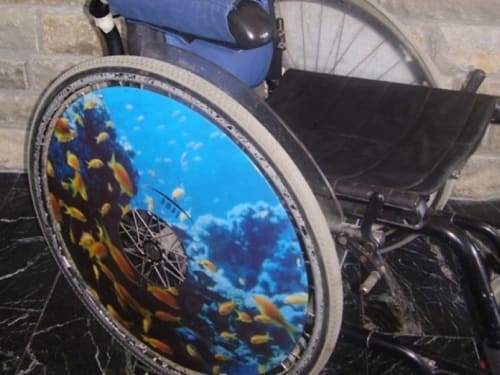2012
Medical
The electrocardiograph machine has not changed significantly over the past 50 years. In this new type of display, the data is processed for pattern recognition that results in the ability to quickly ascertain some of the heart actions. The heart signals are characterized so that defective ion channels can be determined simply by observation.
Levitated conveyors move silently and seemingly effortlessly
without lubrication or wear-producing debris as magnetic forces provide suspension without wheels. Ideal for medical or semiconductor clean rooms where dust or contaminants are
prohibited, these systems save power as well.
Our entire track system is totally passive inexpensive steel, easily installed and modified.
Conception and demonstration of a new pathology device. Initially, a non-invasive glucometer for the mass market, to extend the use of the device to facilitate the diagnosis and screening for multiple other diseases and disorders. These inventions and developments have been protected by patent.
An improvement in evaluating patients with a Strabismus type problem as a result of strokes or accidents. It is a patient driven digital projection system coupled to a laptop reducing technician time from up to 45 minutes to less than one minute with a digital image with all pertinent calculations prepared.
Today's need to improve quality of life of people with disabilities requires flexible, personal and innovative solutions. The latest ongoing studies demonstrate that technology, if used in a correct scenario of services, can offer the right aids that help in restoring physical limitations, impairments or in maintaining residual physical capacities.
Artificial Brain
1/ A person is watching a video
2/ The skull is covered with electrodes.
3/ The lit up neurons are recorded by the computer. Their voltages, currents, positions & time of lit up are recorded.
4/ If we reverse the process, the computer lights up the quantum dots inside the artificial brain with the right currents, positions & the timing,
The application “Patient Care” focuses on patients who need medical attention and face various degrees of difficulty while communicating with the outside world. This project was taken up based on the advice of medical professionals who felt that there is a stringent need for a cheap, easy to use communication device for their patients.
One in 50 people are living with paralysis (Dana & Christopher Reeve Foundation). Children and adolescents represent a significant percentage of patients (20% are under 20 years of age and 5% are under 15 years of age). There are unique aspects of treatment for a child with spinal cord injury that need to be considered; however,
The blue photocoagulator device is a compact and easy to use device, based on Light Emitting Diode (LED) technology, able to induce hemostasis of superficial bleeding through a photo-thermo-coagulation process, without any collateral damage to surrounding tissue.
Extracellular microelectrode array (MEA) electrophysiology has become a widespread technique for the recording and stimulation of bioelectrical signals. It finds application in medical diagnostics and treatments such as epicortical origin localization of epileptic seizures,
Page 6 of 9









